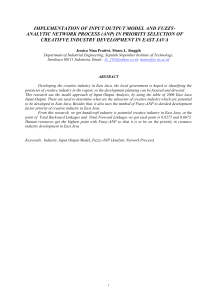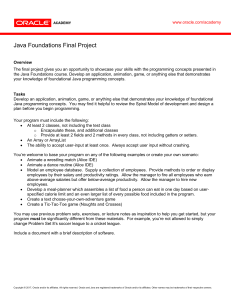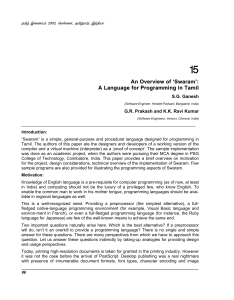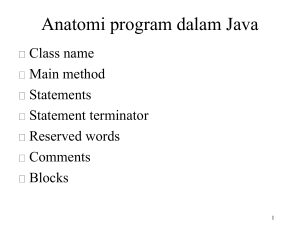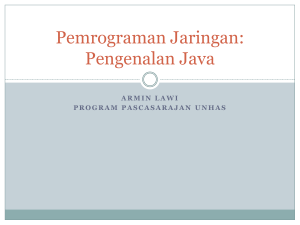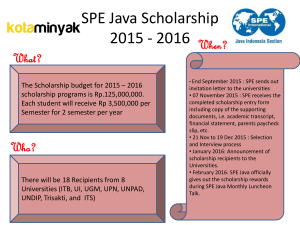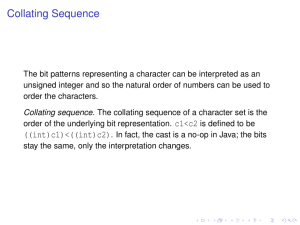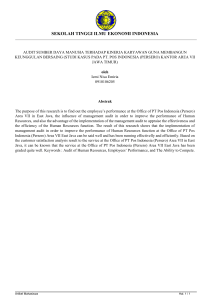New Languages on the JVM - OpenJDK
advertisement
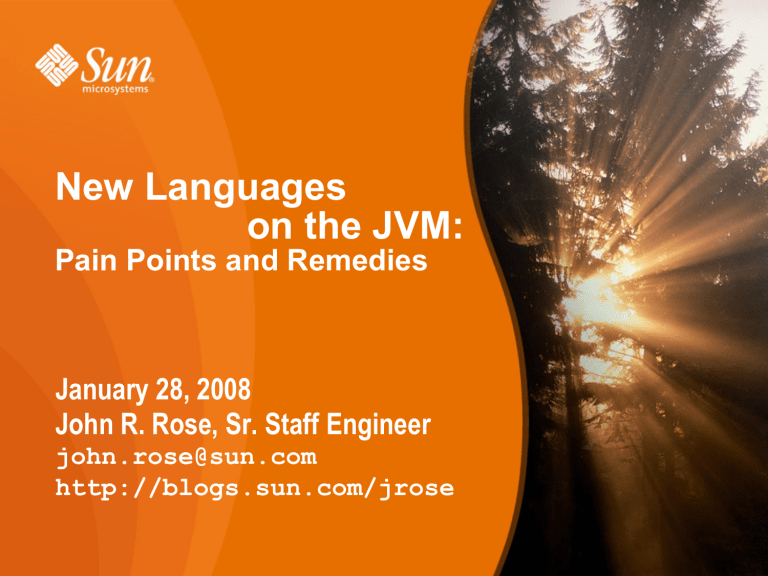
New Languages on the JVM: Pain Points and Remedies January 28, 2008 John R. Rose, Sr. Staff Engineer [email protected] http://blogs.sun.com/jrose Agenda • • • • • • Opportunities Problems Case studies Solutions Ruby and the JVM (Your item here...) 2 Opportunities... • • • • VM-based systems have become normal CPU cycles are cheap enough for JIT, GC, RTT, ... many Java programmers, tools, systems much of the ecosystem is now open-source 3 Great (J)VM features • • • • • • • flexible online code loading (with nice safe bytecodes) GC & object schema reflective access to classes & objects lots of ancillary tools (JMM, JVMTI, dtrace) good libraries & a nice language to write more optimizing JIT, object- and library-aware clever performance techniques: > type inference, customization, profiling, deoptimization, fast/slow paths, etc., etc. 4 Opportunities... Bottom line... VMs and tools are both mature and ubiquitous • So what shall we build now...? > partial answer: more languages! • There seem to be about 200 JVM language implems: http://robert-tolksdorf.de/vmlanguages.html 5 Opportunities... High level languages often require: • very late binding (runtime linking, typing, code gen.) • automatic storage management (GC) • environmental queries (reflection, stack walking) • exotic primitives (tailcall, bignums, call/cc) • code management integrated with execution • robust handling of incorrect inputs • helpful runtime support libraries (REs, math, ...) • a compiler (JIT and/or AOT) that understands it all 6 Problems • VMs can do much more than C/C++, > but not quite enough for emerging languages > historically, the JVM was for Java only... > (historically the x86 was for C and Pascal...) • Language implementors are trying to reuse Vms > Near-misses are experienced as “pain points” 7 Case Study: Scheme M. Serrano, “Bigloo.NET: compiling Scheme to .NET CLR”, 2007 http://www-sop.inria.fr/mimosa/Manuel.Serrano/publi/jot04/jot04.html • • • • • Uses the “natural style” for each platform (C/J/.N) Full continuations only in C (stack copy hack) Tailcall instruction in .N is too costly Closures poorly emulated by inner classes or delegates Bulky boxes for ints, pairs bloat the heap 8 Case Study: Python Bolz & Rigo, “How to not write Virtual Machines for Dynamic Languages”, 2007 http://dyla2007.unibe.ch/?download=dyla07-HowToNotWriteVMs.pdf http://blogs.sun.com/jrose/entry/a_day_with_pypy • • • • • PyPy provides extreme flexibility to implementors Demands extreme flexibility from its back-end Fine-grained path JIT, contextually customized types JIT blocks connected with expandable switch and tailcall Could still make great use of a suitably factored VM... 9 So what's missing? • Dynamic invocation • And always, higher performance 10 So what's missing? • • • • • • • • • Dynamic invocation Lightweight method objects Lightweight bytecode loading Continuations and stack introspection Tail calls and tail recursion Tuples and value-oriented types Immediate wrapper types Symbolic freedom (non-Java names) And always, higher performance 11 the Da Vinci Machine a multi-language renaissance for the Java™ Virtual Machine architecture http://openjdk.java.net/ /projects/mlvm/ 12 A Solution from Sun • Evolutionary adaptation of the present JVM • Open-ended experimentation on Sun's Hotspot > wild ideas are considered, but must prove useful > while incubating, features are disabled by default • Eventual convergence on standards • Extension of the standard JVM architecture > deliberate, measured, careful extension 13 Da Vinci Machine Mission Statement • Prototype JVM extensions to run non-Java languages efficiently • First-class architectural support (not hacks or side-cars) • Complete the existing architecture with general purpose extensions • New languages to co-exist gracefully with Java in the JVM 14 Invented by Leonardo himself?? 15 Dynamic invocation: A great idea • non-Java call site in the bytecodes • language-specific handler > determines call linkage at runtime > works in a reflective style > installs direct (non-reflective) methods • type-sensitive target method selection • stateful: updated or revoked over time 16 Method handles • • • • • Method Handle = lightweight reference to a method caller invokes without knowing method’s name, etc. call runs at nearly the speed of Java call required to glue together dynamic call sites requires VM and/or library support for common adaptation patterns (curry, receiver check, varargs) 17 Anonymous classes • Faster and more reliable loading and unloading • Little interaction with system dict. or class loaders > (“class names considered harmful”) • Library-directed code customization > via constant pool patching 18 Performance work • No-brainer: Support less-static bytecode shapes > Ongoing for years; see website for fixed bugs > Examples: Class.isInstance, Arrays.copyOf • Faster reflection • More subtle: Faster closure-type objects • Escape analysis (etc.) to remove auto-boxing • Etc., etc. 19 Other great VM ideas (which might need community champions) • • • • Interface injection (traits, mega-inheritance) Continuations (cf. Scheme call/cc) Value object (cf. Lisp fixnums) Tuple types (cf. .NET structs) 20 Are we re-inventing the world? • No, we are adapting classic ideas to the JVM. > In some cases, exposing mature JVM internals to language implementors, for the first time. > In other cases, adjusting JVM architecture to be less Java-centric. • Language implementors know what they want > (and know how to simulate it with 100x slowdown) • VM implementors know what VMs can do > (and know how to make their favorite language sing) • Let's bring them together. 21 Ruby meets Duke Charles Nutter, Sr. Staff Engineer [email protected] http://headius.blogspot.com/ 22 JRuby Design: Lexer and Parser • Hand-written lexer > originally ported from MRI > many changes since then • LALR parser > Port of MRI's YACC/Bison-based parser > We use Jay, a Bison for Java > DefaultRubyParser.y => DefaultRubyParser.java • Abstract Syntax Tree similar to MRI's > we've made a few changes/additions 23 JRuby Design: Core Classes • Mostly 1:1 core classes to Java types > String is RubyString, Array is RubyArray, etc • Annotation-based method binding public @interface JRubyMethod { String[] name() default {}; int required() default 0; int optional() default 0; boolean rest() default false; String[] alias() default {}; boolean meta() default false; boolean module() default false; boolean frame() default false; boolean scope() default false; boolean rite() default false; Visibility visibility() default Visibility.PUBLIC; } ... @JRubyMethod(name = "open", required = 1, frame = true) 24 JRuby Design: Interpreter • Simple switch-based AST walker • Recurses for nested structures • Most code starts out interpreted > command-line scripts compiled immediately > precompiled scripts (.class) instead of .rb > eval'ed code always interpreted (for now) • Reasonably straightforward code • Future: generate the interpreter to reduce overhead 25 JRuby Compiler • First complete Ruby 1.8 compiler for a general VM • Fastest 1.8-compatible execution available • AOT mode > Avoids JIT warmup time > Works well with “compile, run” development > Maybe faster startup in future? (a bit slower right now) • JIT mode > Fits with typical Ruby “just run it” development > Eventually as fast as AOT > You don't have to do anything different 26 Compiler Pain • AOT pain > Code bodies as Java methods need method handles > Generated as adapter methods...see JIT below > Ruby is very terse...i.e. compiled output is verbose > Mapping symbols safely (class, package, method names) • JIT pain > Method body must live on a class > Class must be live in separate classloader to GC > Class name must be unique within that classloader > Gobs of memory used up working around all this 27 Compiler Optimizations • Preallocated, cached Ruby literals • Java opcodes for local flow-control where possible > Explicit local “return” as cheap as implicit > Explicit local “next”, “break”, etc simple jumps • Java local variables when possible > Methods and leaf closures > leaf == no contained closures > No eval(), binding(), etc calls present • Monomorphic inline method cache > Polymorphic for 1.1 (probably) 28 Optimization Pain • “Build-your-own” dynamic invocation (always) > Naïve approach fails to perform (hash lookup, reflection) • “B-y-o” reflective method handle logic > Handle-per-method means class+classloader per > Overloaded signatures means more handles > Non-overloading languages introduce arg boxing cost • “B-y-o” call site optimizations > ...and make sure they don't interfere with JVM optz! • We shouldn't have to worry about all this 29 Custom Core Classes • • • • String as copy-on-write byte[] impl Array as copy-on-write Object[] impl Fast-read Hash implementation Java “New IO” (NIO) based IO implementation > Example: implementing analogs for libc IO functions • Two custom Regexp implementations > New one works with byte[] directly 30 JRuby Design: Threading • JRuby supports only native OS threads > Much heavier than Ruby's green threads > But truly parallel, unlike Ruby 1.9 (GIL) • Emulates unsafe green operations > Thread#kill, Thread#raise inherently unsafe > Thread#critical impossible to guarantee > All emulated with checkpoints (pain...) • Pooling of OS threads minimizes spinup cost > Spinning up threads from pool as cheap as green > Future: used for coroutine support (Ruby 1.9's “Fiber”) 31 JRuby Design: Extensions, POSIX • Normal Ruby native extensions not supported > Maybe in future, but Ruby API exposes too much • Native libraries accessible with JNA > > > > Not JNI...JNA = Java Native Access Programmatically load libs, call functions Similar to DL in Ruby Could easily be used for porting extensions • JNA used for POSIX functions not in Java > Filesystem support (symlinks, stat, chmod, chown, ...) > Process control 32 Questions? Let's talk... John Rose Charles Nutter {john.rose,charles.nutter}@sun.com
